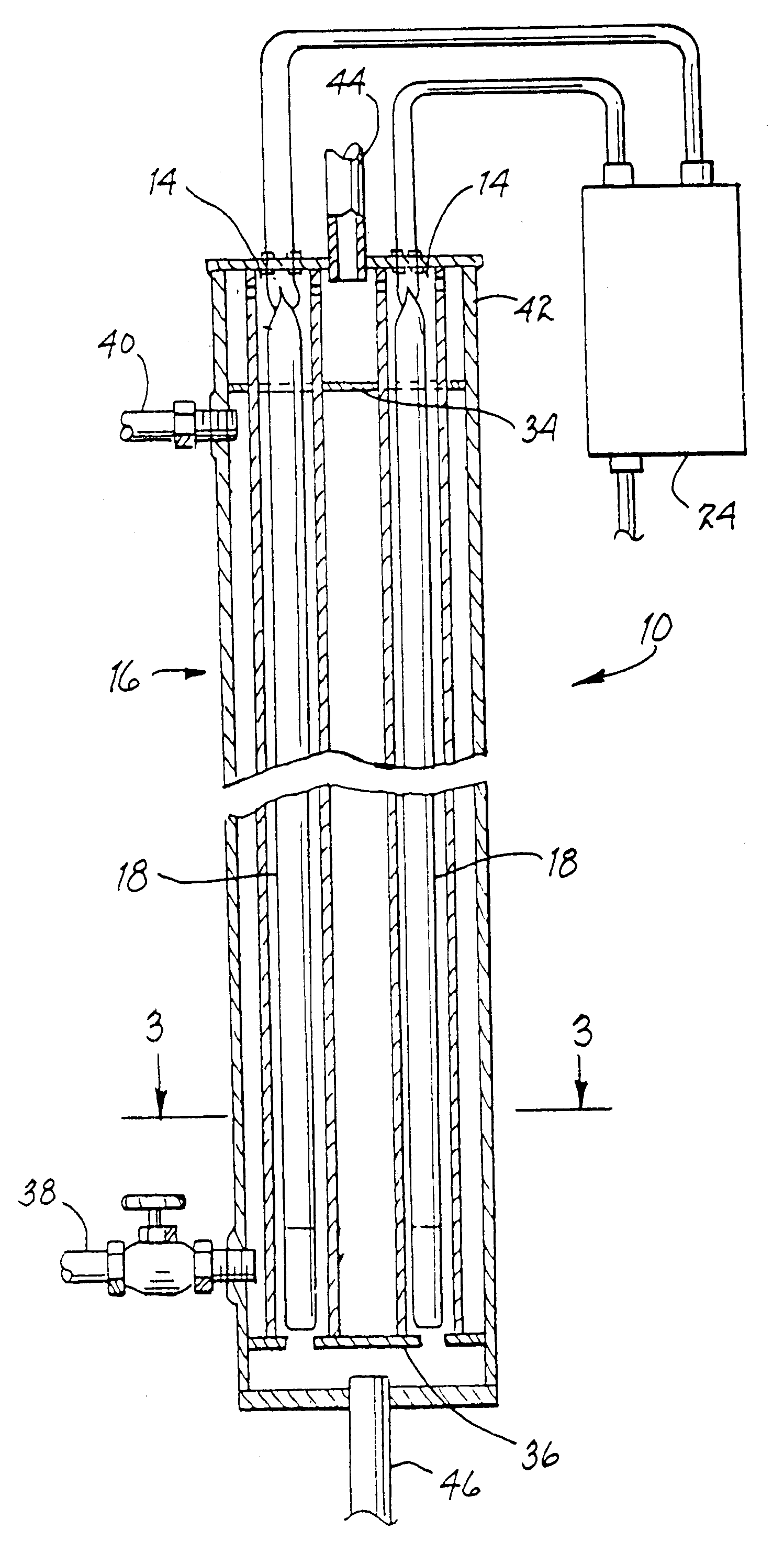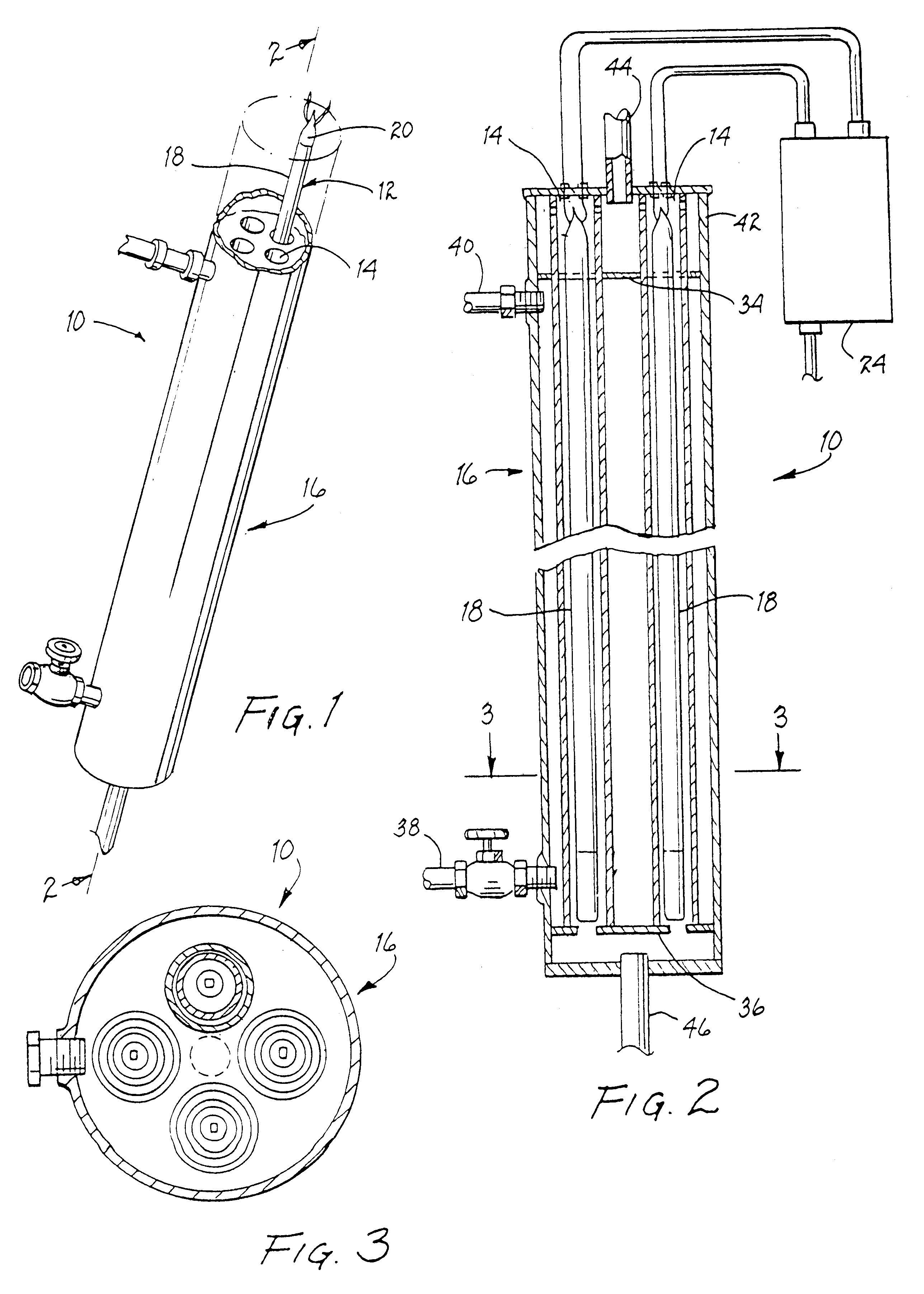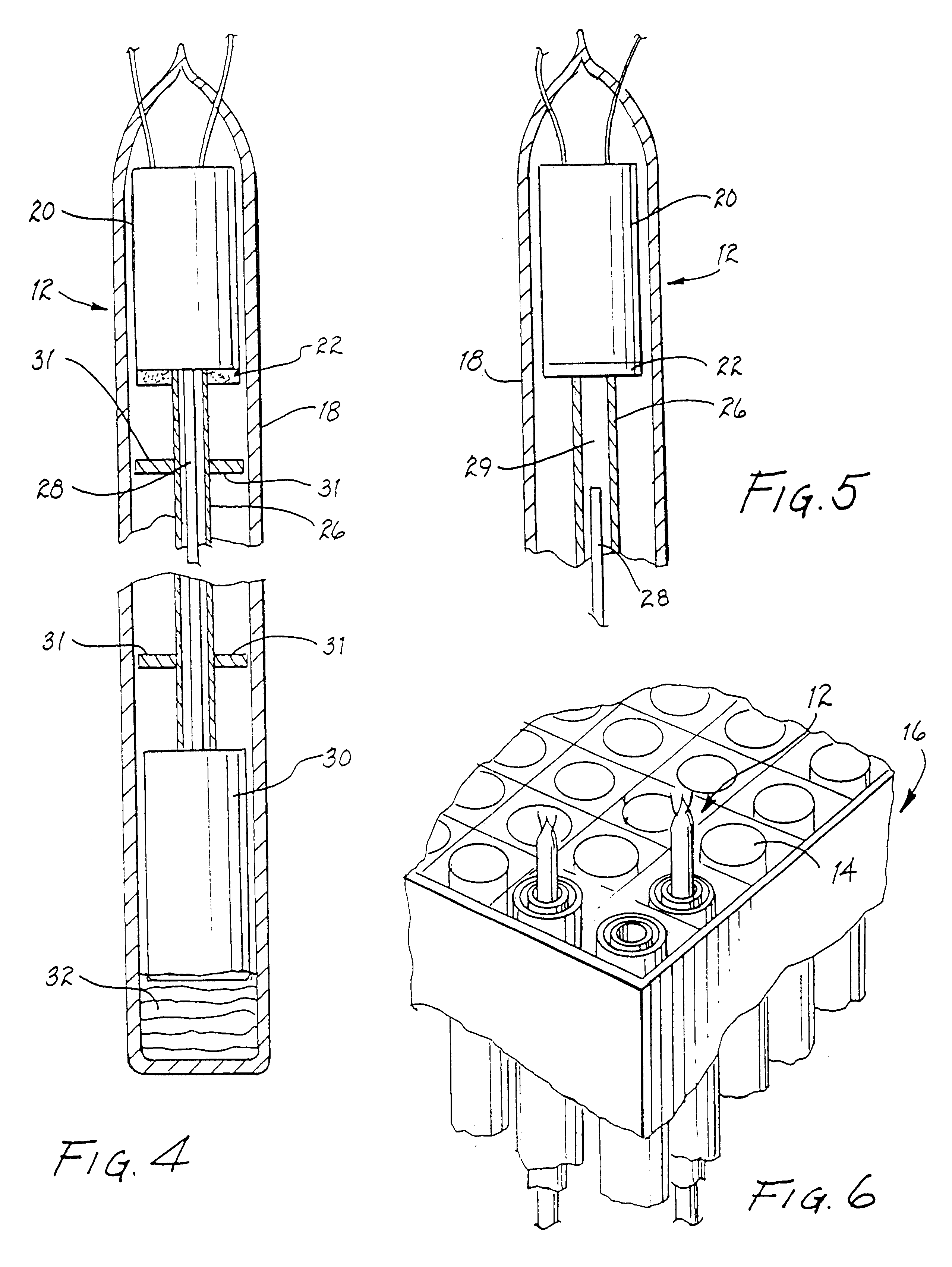System and method for preserving stored foods
a technology for preserving foods and food components, applied in plasma welding apparatus, energy-based chemical/physical/physico-chemical processes, manufacturing tools, etc., can solve the problems of limiting the suitability of systems and methods for preserving stored foods, and affecting the safety of consumers
- Summary
- Abstract
- Description
- Claims
- Application Information
AI Technical Summary
Benefits of technology
Problems solved by technology
Method used
Image
Examples
Embodiment Construction
In accordance with one embodiment of the present invention, a system for preserving stored foods is disclosed. The system comprises, in combination: an apparatus for bombarding a feed gas with electrons to generate ozone and other atoms and molecules comprising: a first electrode; wherein said first electrode comprises: an electron gun coupled to a power source and located proximate one end of said first electrode; a rod in electrical communication with said electron gun; a first tube of dielectric material disposed along a length of said rod; a second tube of dielectric material dimensioned to receive therein said first tube; wherein said second tube is substantially sealed; and an inert gas disposed within each of said first tube and said second tube; a second electrode containing a channel dimensioned to receive therein said first electrode so that sufficient space is present between said first electrode and said second electrode that a feed gas may be passed through said channel...
PUM
| Property | Measurement | Unit |
|---|---|---|
| length | aaaaa | aaaaa |
| temperature | aaaaa | aaaaa |
| temperature | aaaaa | aaaaa |
Abstract
Description
Claims
Application Information
 Login to View More
Login to View More - R&D
- Intellectual Property
- Life Sciences
- Materials
- Tech Scout
- Unparalleled Data Quality
- Higher Quality Content
- 60% Fewer Hallucinations
Browse by: Latest US Patents, China's latest patents, Technical Efficacy Thesaurus, Application Domain, Technology Topic, Popular Technical Reports.
© 2025 PatSnap. All rights reserved.Legal|Privacy policy|Modern Slavery Act Transparency Statement|Sitemap|About US| Contact US: help@patsnap.com



